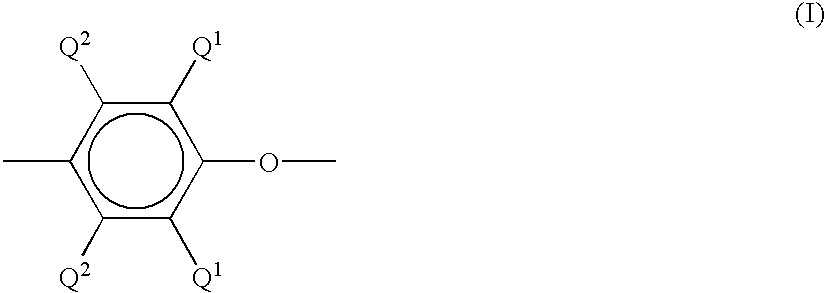Corona resistant thermoplastic blends and methods for manufacture thereof
a thermoplastic blend and corona technology, applied in the field of thermoplastic compositions, can solve the problems of unreliable thermoplastic compositions for high-voltage applications such as electrical motor applications, failures of thermoplastic compositions, and failures of other chemical processes, and achieve the effect of facilitating wet-out and wet-through of matrix materials
- Summary
- Abstract
- Description
- Claims
- Application Information
AI Technical Summary
Benefits of technology
Problems solved by technology
Method used
Image
Examples
Embodiment Construction
[0033] The components for each corona resistant composition shown in the examples below were extruded in a 30 mm twin screw extruder manufactured by Werner and Pfleiderer. The extruder had 9 barrels or heating zones set at temperatures of 250.degree. C., 290.degree. C., 290.degree. C., 300.degree. C., 310.degree. C., 310.degree. C., 310.degree. C., 310.degree. C. and 310.degree. C. The die temperature was set at 290.degree. C. The extruder was run at 300 rpm. The strand emanating from the extruder was pelletized, dried and subjected to injection molding to manufacture the test parts. Some of the properties of the various components used in the compositions are shown in Table 1. The amounts of each component employed in the various compositions are shown in Table 2. All of the compositions shown in Table 2, were prepared by using a masterbatch comprising 61 wt % polyphenylene sulfide, 23 wt % polyphenylene ether, 9 wt % flow promotor (Arkan P-125 obtained from Arakawa Chemical) and 7...
PUM
| Property | Measurement | Unit |
|---|---|---|
| wt % | aaaaa | aaaaa |
| voltage | aaaaa | aaaaa |
| diameter | aaaaa | aaaaa |
Abstract
Description
Claims
Application Information
 Login to View More
Login to View More - R&D
- Intellectual Property
- Life Sciences
- Materials
- Tech Scout
- Unparalleled Data Quality
- Higher Quality Content
- 60% Fewer Hallucinations
Browse by: Latest US Patents, China's latest patents, Technical Efficacy Thesaurus, Application Domain, Technology Topic, Popular Technical Reports.
© 2025 PatSnap. All rights reserved.Legal|Privacy policy|Modern Slavery Act Transparency Statement|Sitemap|About US| Contact US: help@patsnap.com


